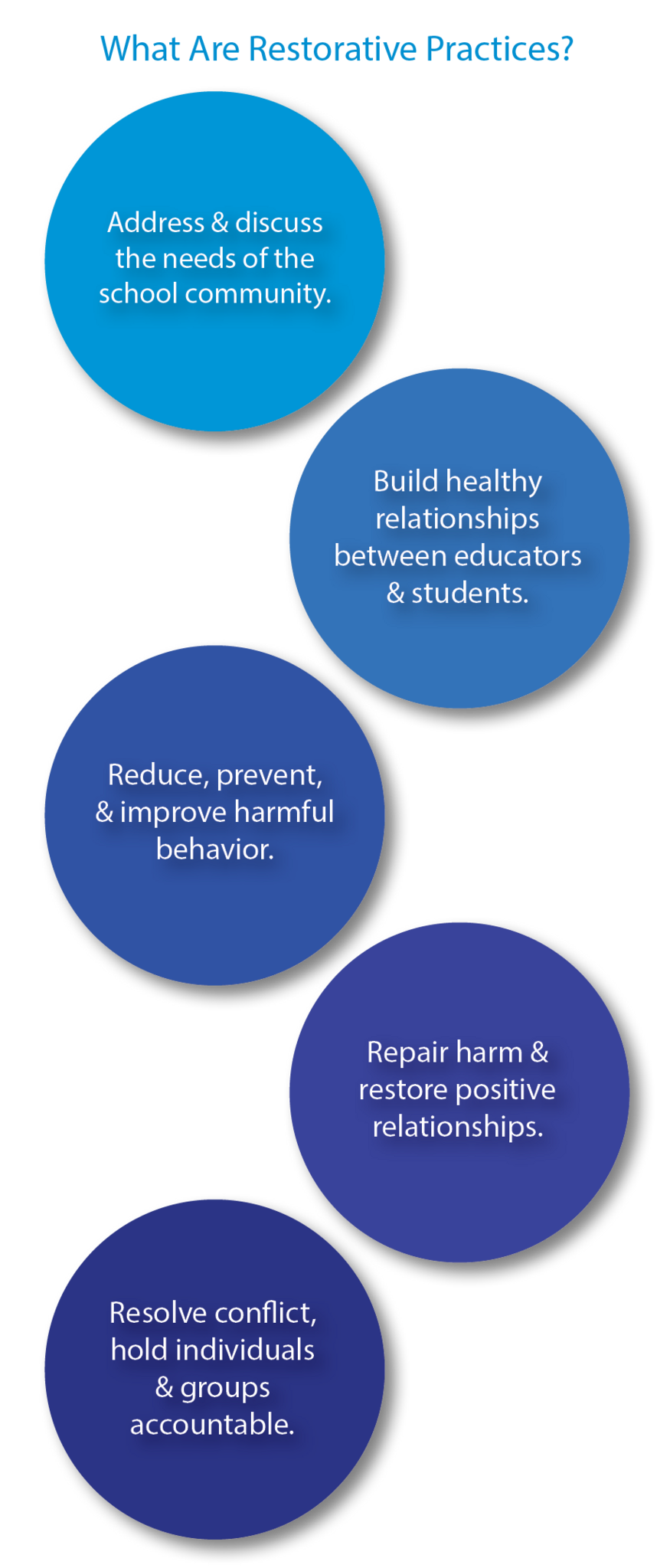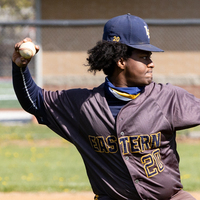Restorative Justice is a peaceful, conflict resolution program that aims to bring together students that have had conflict, to find ways to heal the harm that has been done. The program targets conflict situations in schools by engaging all affected parties.
Restorative Justice Facilitators are on site and are available as situations arise within schools. Restorative Justice addresses the conflict at the root, while promoting conflict resolution skills and empathy.
The Restorative Justice process is as follows:
- Referral: student is referred to Restorative Justice by staff, administrators, or by oneself
- Intake: facilitators meet with all parties individually to talk about what happened, the effect of what’s happened, and what the student needs to move forward. After processing with the student individually, students decide whether they’d like to participate in a circle intervention
- Circle: All parties are brought together for a circle, where the facilitator leads the conversation. Students are asked what happened from their perspective, who was affected and how, and what needs to happen to heal the harm
- Agreement: Students create an agreement outlining how they will resolve the conflict, avoid similar situations in the future, and respond to future conflicts.
- Follow-Up: Facilitators conclude the circle with a Short Term Survey, asking students how they feel the process went. Twenty-one days after the circle intervention, facilitators follow up with a Long Term Survey, seeing how the students have progressed from their conflict
Intended Outcomes
Restorative Justice addresses the conflict at its root by:
- Imposing accountability on and empowering those who have done harm to correct the harm caused by his/her behavior;
- Empowering those who have been harmed to define what he/she needs to heal from the harm done; teaches and engages youth (and sometimes their families) in peaceful conflict resolution practices.”
Restorative practices are an inclusionary, non-punitive discipline approach.
Restorative practices are student-centered interventions that are designed to establish positive relationships with all students (Kline, 2016). There is both a proactive and responsive component to restorative practices that can, and perhaps should, work in tandem to yield the most desirable outcome (Watchel, 2013). The “proactive” component of restorative practices focuses on creating just and equitable learning environments and nurturing healthy relationships; whereas the “responsive” component focuses on repairing harm and transforming conflict (Evans & Vaandering, 2016).



